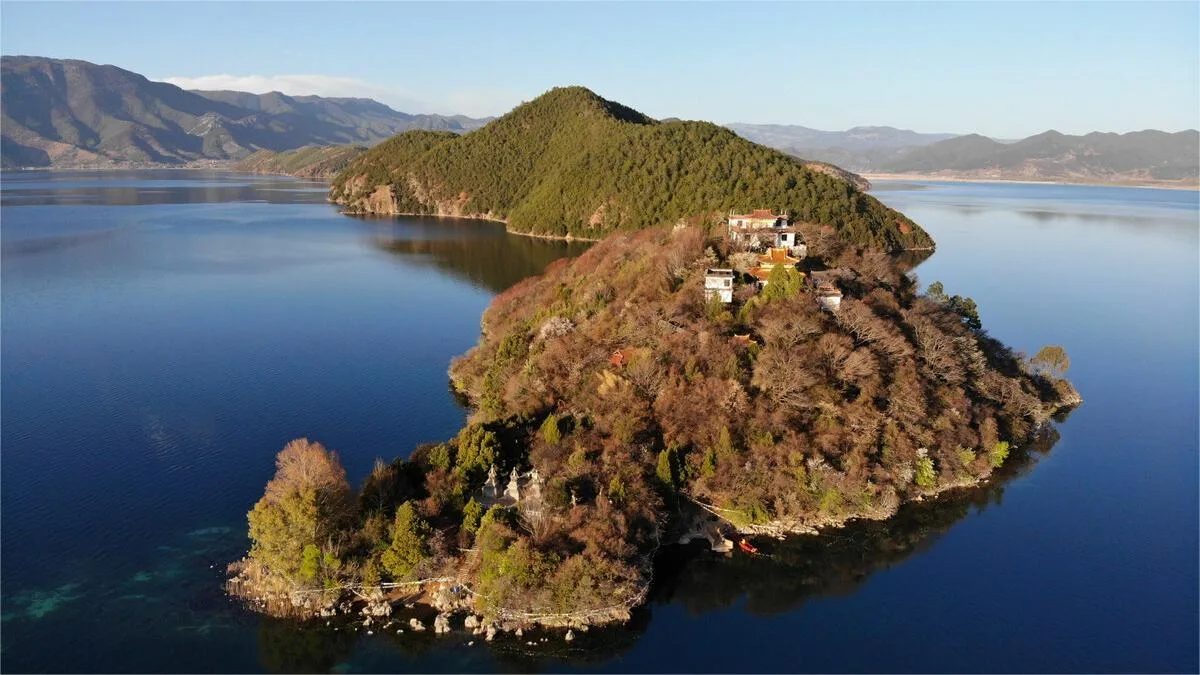Liwubi Island (里务比岛) is situated in the central-southern part of Lugu Lake in Lijiang, serving as the largest island in the lake. It divides Lugu Lake into two sections, along with Tubu Peninsula, while facing Snake Island to the northwest. On one side of the island lies a natural pier formed by limestone formations, serving as a dock for boats. A winding pathway leads directly to the top of the island, flanked by numerous rhododendrons and wild cherry trees. At the end of the flower clusters lies the Liwubi Monastery, a Yellow Sect Lama temple.
Visiting Liwubi Island usually starts from the Daluoshui Pier, and it takes about 20 minutes by boat to reach the island. The boat fare is negotiable, typically ranging from 30 to 50 yuan for a round trip.
Liwubi Monastery
Liwubi Monastery, established in the year 1634 AD, houses statues of various Buddhist deities, including the founder of Buddhism, Shakyamuni Buddha, Avalokiteshvara, the Thousand-Armed Avalokiteshvara, Tsongkhapa (the founder of the Gelug school of Tibetan Buddhism), and his two disciples. During Tibetan festivals or Buddhist celebrations, the monastery committee leads large-scale Buddhist activities, especially during the fasting and repentance ceremony starting from the second day of the sixth month in the lunar calendar. This event attracts religious followers from along the lake and neighboring regions, such as Yongning, Labo, Sichuan, and Zuo, with voluntary participation sometimes exceeding a hundred people. Apart from thousands of prostrations performed during the ceremony, participants also engage in activities like fasting and refraining from speaking, aiming to accumulate spiritual merits.
White Pagoda
At the summit of Liwubi Island stands a white pagoda, serving as the memorial stupa of A Yunshan, the chief administrator of the Yongning Mosuo chieftain’s office. A Yunshan, born on February 24, 1871, was a prominent figure in the Mosuo political arena in the Yunnan, Sichuan, and Tibet regions. As the chief administrator, he gained recognition and admiration from both internal and external communities for his outstanding administrative and diplomatic abilities. He effectively controlled all political, military, and religious rights in the Yongning Mosuo region during his tenure, making him a revered ruler among the Mosuo people. To commemorate him, his ashes were collected in a tomb after cremation according to Mosuo customs. In 1989, his second son, Losang Yixi, a living Buddha, built the stupa according to Tibetan Buddhist traditions to enshrine his father’s relics for future generations to admire, along with inscriptions engraved on the stupa.







